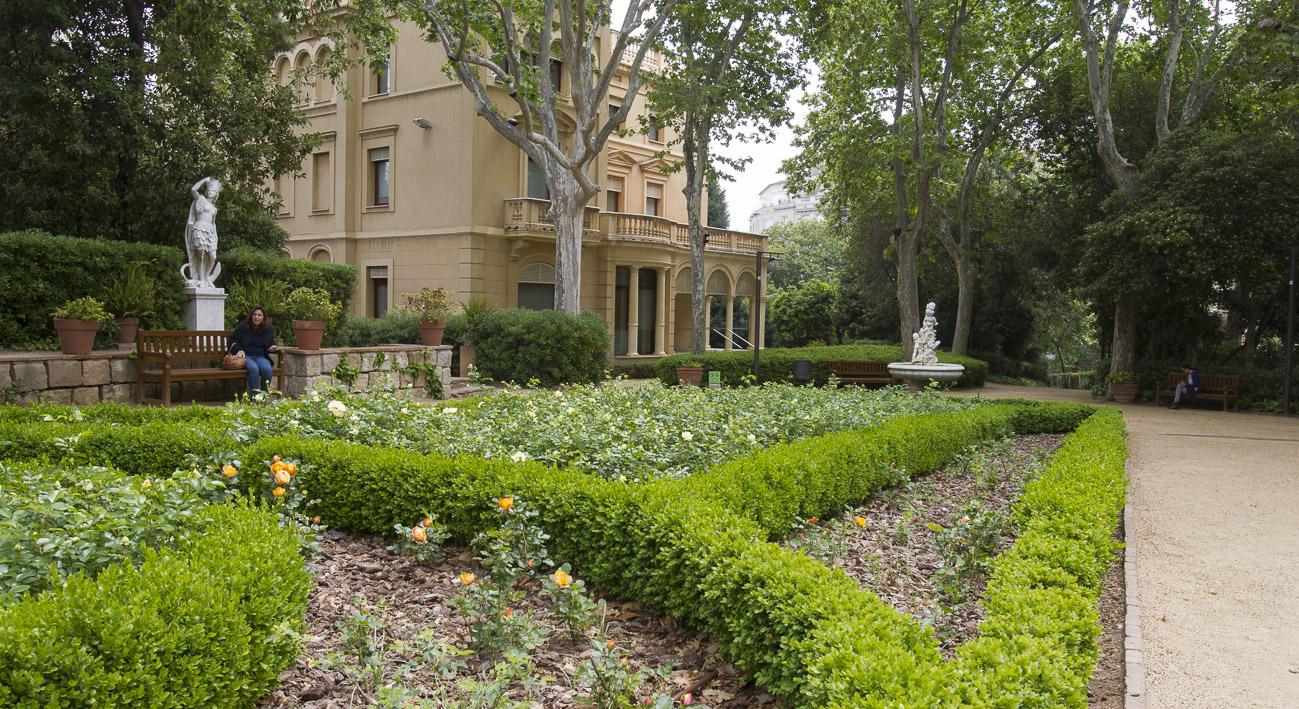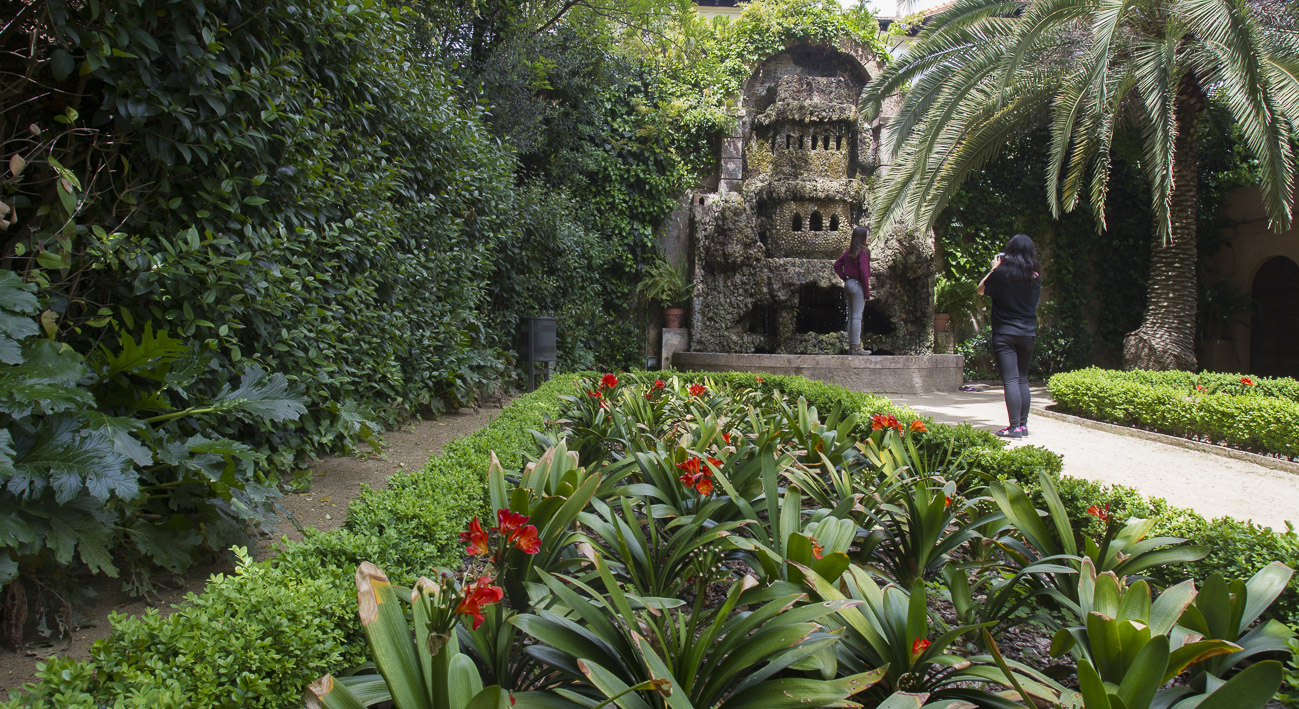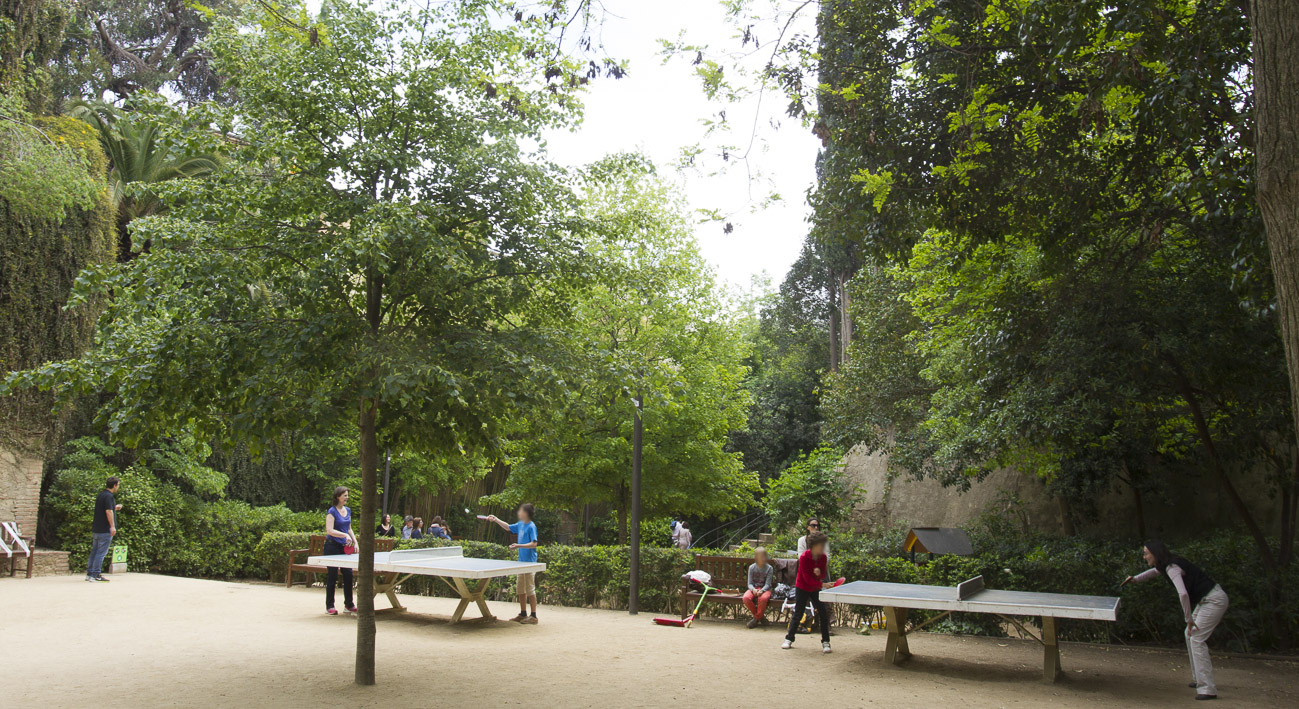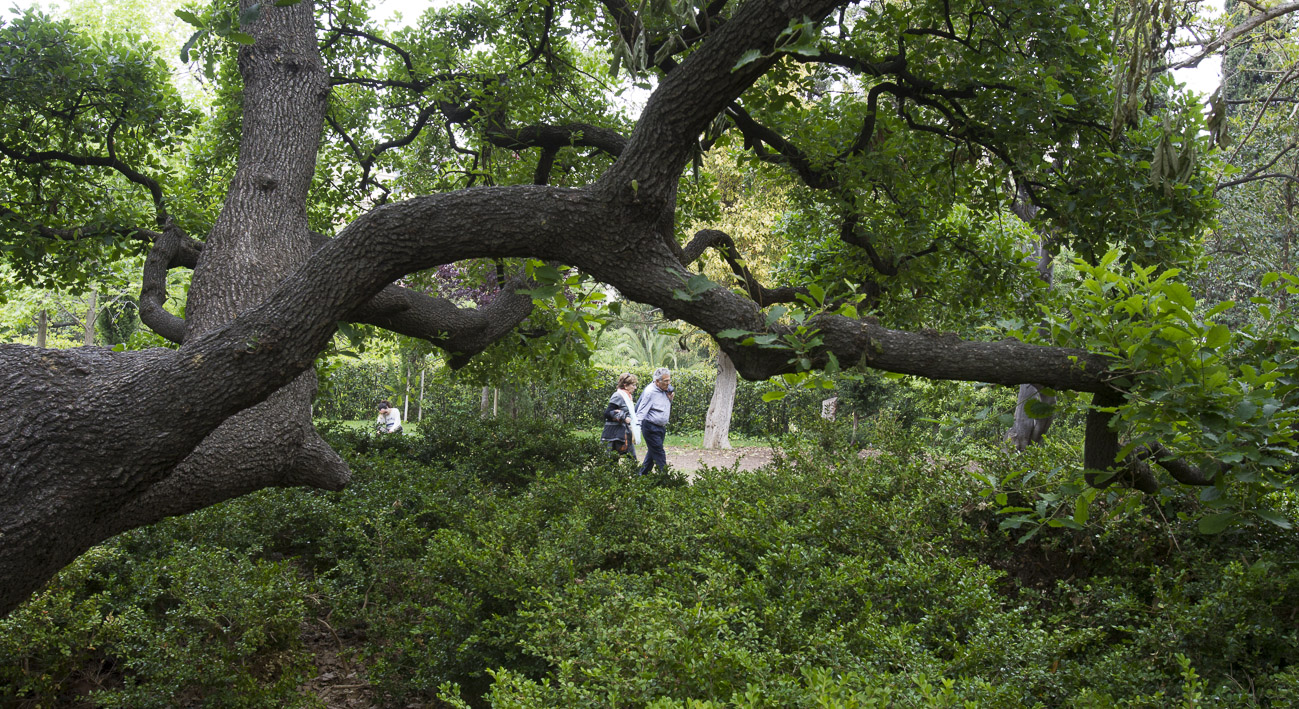When you pass through the gate into the Jardins de La Tamarita, you enter a Barcelona that takes you back to a time when the bourgeoisie were building themselves mansions surrounded by gardens in the upper part of the city.
These gardens are a good place for a rest and some peace and quiet, far from the madding crowd, on the other side of the stone and wrought-iron wall that surrounds the gardens, built to safeguard a space that was once private and which is now public.

History
The Jardins de La Tamarita are a living example of a private garden that has become a public space and a piece of public heritage. They are part of a two-hectare estate that once belonged to the Craywinckel family and which was bought by the cotton manufacturer Alfredo Mata at the start of the 20th century. He had a house surrounded by gardens built there, with a design considered to be one of the first by the architect and landscape artist Nicolau M. Rubió i Tudurí, who kept the original plant forms and layouts.

Biodiversity
Here you will find myrtle, privet, sweet bay and large-sized cheesewood, as well as black locusts and plane trees. There are also European yews, Seville orange trees, boxwood and a jacaranda. Once you get to a stream called the Torrent del Frare Blanc you will find cypresses, acanthuses, lily turfs, more cheesewood and privet, bamboo trees and large silver limes.
The park has some curious species too, such as araucaria, a silk oak that also comes from Australia, and a purple-leaf European beech. Besides these you will see a highly valuable tree of local interest rarely found in Barcelona, an English oak, which is a hundred years old and 23 metres high.

Landscaping and Design
It is divided into two distinct areas, one more orderly and classical and another, taking advantage of the passage of the stream, with a more natural look.
The gardens are full of decorative features that betray their origins as a house garden: small pools, with fountain jets, terracotta figures, stone, marble and ceramic cups turned into fountains, ornamental flower vases, and so on. As soon as you enter you are faced with a fountain and small pool framed by a climbing plant, maidenhair vine, which is a type of exotic, tropical creeper. All that conceals one of the garden’s pavilions which is now put to social use as the centre of a residents’ association and a service building.
The more classical garden, with its orderly set of flowerbeds of French origin, offers a profusion of boxwood and rose bushes, re-introduced to restore the garden’s original look the last time it was remodelled. Straight ahead, you will find a space that acts as a small square, the Plaça dels Quatre Continents (four continents) with an oval-shaped fountain, a nympheum with a fountain-grotto waterfall and the grassy area that leads to the garden’s most natural part.
-
- Phone number
- Tel.: 010
-
- Accessibility
- Accessible for people with physical disabilities
-
- Titularity
- Public center
- Address:
- Pg Sant Gervasi, 47*49
- Districte:
- Sarrià-Sant Gervasi
- Neighborhood:
- Sant Gervasi - la Bonanova
- City:
- Barcelona
Timetable
| Periode | Dies | Hores | |
|---|---|---|---|
Horari d'hivern de l'1 de novembre al 31 de març |
Cada dia | de 08.00 h a 19.00 h | |
Horari d'estiu de l'1 d'abril al 31 d'octubre |
de 08.00 h a 21.00 h |
aproximada, en funció de
l'horari solar (tanquen
quan es fa fosc, al capvespre)






